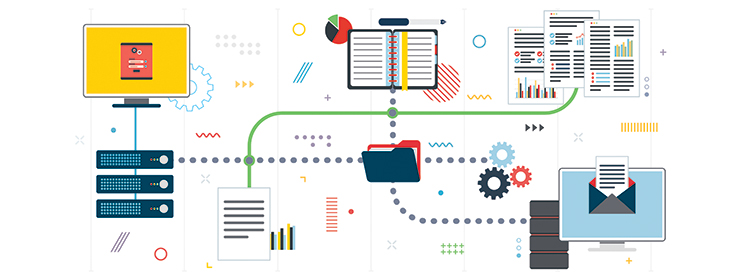

In what might seem like the blink of an eye, the majority of companies nationwide have shifted to doing business remotely. Supporting employee motivation, morale and productivity at a distance comes with new challenges for business leaders.
Fortunately, remote jobs have long been a feature in the broader business sector. Surveys like this one from FlexJobs report a steady increase in the inclusion of remote work options in companies of all sizes. A 2019 survey reported that 50% of employees worldwide were working away from their offices at least 2.5 days per week. Prior to the COVID-19 pandemic, Global Workplace Analytics estimated that 5 million employees were working from home half-time or more and remote work has grown 173% since 2005—outpacing the growth of workplace at large as well as the growth of the self-employed population. Company analysts also predict that post-COVID-19 workplace scenarios will change because of pandemic-related remote operations, with 25 to 30% of the workforce working remotely at least one day a week.
The steady increase in remote work is an advantage in today's work environment. There are resources, insights and already-learned lessons that can help companies quickly and optimally adapt to the new world of a remote workforce that is happening across all business sectors.
In this two-part series, we'll focus on the tips, insights and recommendations that could be useful for responding to the remote work demand. We have used a common model used to describe a company's structure—the three-element People, Process and Technology—only in reverse order. To optimize your remote work structure to function over the next few months:
In part one, the focus is on the technologies needed for remote work.
The right technology and/or software are critical to effectively manage a company remotely. Almost all activities undertaken by remote workers in a workday require tech tools, including (but certainly not limited to):

Companies have several technology options they can put in place to support these activities. While not an exhaustive list of available tools, these examples can be a starting point for determining the best combination for your business.
Google began developing tools for remote work several years ago and GSuite is the result of the company's forward thinking. The platform is organized around four generic business activity groups: Connect, Create, Access, and Control. Part of the Create group includes Apps Script, which allows user to customize GSuite to their own needs.
This platform might be a good remote working solution for companies that have not yet incorporated remote tools into their business. Individual features could also be used to fill in gaps in remote working technology and work alongside other tools.
Microsoft has also been thinking forward to a business world that operates remotely. Microsoft 365 (formerly Office 365) encompasses comprehensive tools that remote workers need. It offers three business subscription options, all of which include familiar Office programs like Word, Excel, and PowerPoint. These programs can be used on local systems and handheld devices or used on the Internet without local installation. Outlook is for email communication as well as calendar and task tracking. OneDrive handles folder storage and sharing, while team collaboration is available via SharePoint and Teams.
Microsoft 365 could be a good option for companies that already use Microsoft programs and need to fill in with collaboration tools that integrate well together.

Individual tools are available that perform one or a few functions needs for remote work. Examples include:
Many of these tools integrate with one another. Basecamp, for example, allows user to add Slack, Asana, Dropbox, and/or Gsuite. This enables companies to put together a toolbox of remote work technologies that suit their needs, culture, and workforce.
Technology tools like these help a remote business to support the Process and People components of organization structure. Part 2 of this article will offer insights and tips for aligning these two components to a remote scenario.
~~~
Ascentium Capital offers technology and software financing programs to help your company prepare and support your remote work needs.
Contact us today for and receive a no obligation financing quote.
